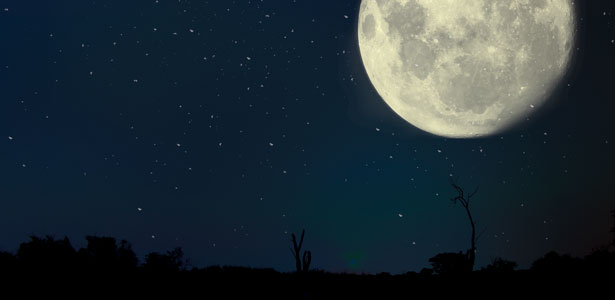
The spawn is naturally one of the prime times of the year to wet a line and this is when most bass are naturally aggressive and at the same time probably most vulnerable to our offerings. Spawn fishing of course raises a few sensitive issues with regards to the ethical longevity of our sport and is something that needs to be treated with respect, but this is the time of year when some potentially frustrating but great bassing is on the cards.
We often think of fishing the spawn as targeting bedding bass, but there is far more to bassing in spring than plundering nests. In general there are basically 3 phases to the spawn, namely the pre-spawn, spawn and post spawn, and when these phases actually begin is predominately dependant on weather and water conditions as well as location. Generally the pre-spawn in southern Africa will begin around late August through early September, the spawn from early/mid September through early October, and the post spawn from early/mid October through early November. However that all looks good on paper under ideal and predictable weather patterns but in reality bass don’t all spawn at the same time and our weather these days is far from predictable. Not to mention of course that bass in warmer parts of the country will spawn a lot earlier than for instance bass on the highveld. In fact, in really warm areas like those experienced in Zimbabwe for example, bass can begin to start their spawn activities as early as July if conditions are suitable.
Besides watching any positive changing weather patterns and temperatures, keeping a close eye on changing water temperature is generally the best way to decide to target Spring Bass. In fact if you start looking for water temperatures from around 58-60 F (+- 15 C) and rising as the days progress with stable conditions, to around the 61-63 F (+-16.5 C), then this could be a good indication that bass will be on the move, with anything between 65-68 F (18-20 C) usually being ideal spawning temperatures. Bear in mind however that depending on where in the country you are fishing, some waters might never drop below 15 C in winter, so where 15 C might be warming up for some bass, it might be still too cool for others.
Most of us are aware of the three general phases of the spawn; when it comes to the practicalities of fishing spring bass however we can probably further segment this time into 4 stages. The first of these is when the males or “bucks” start prowling the shallows in search of potential nesting sites. Although these are usually smaller fish in comparison to the females, they are fairly numerous, usually quite aggressive and can make for some good action in the early part of the season. These won’t necessarily be all the resident males in that body of water, but more the enthusiastic ones, and can be found in sometimes very shallow water of 1-2 feet. These fish are the early spawners and fan out their nests at least a few days before the females are willing to move up. If conditions are good the females will be cruising nearby and staging around structure and cover just out of the spawning areas, usually on points or drops that lead into the spawning bays or in cover near to potential nests. Both males and females during this phase are pretty susceptible to bait, being quite hungry after the winter phase and sexually irritated. Buzzbaits, spinnerbaits, jerkbaits or Texas rigged creatures, lizards, frogs or crawfish imitations can all be productive during this phase. Staging females in deeper water can also be goaded with Carolinas, drop shot rigs or deep diving crankbaits.
The second stage of the spawn is when you establish that males and females have begun pairing up. This stage can be a tricky one as actual spawning has not yet begun and bass now have only one aim, namely nesting. Hunger is the last thing on their minds and males are making every effort to goad the female onto the nest, with the females playing hard to get and scrutinizing the potential nesting sites. At this time it’s mainly the male bass that will try and chase potential threats away from the area but they can also totally ignore anything you throw at them. In these situations it is often more productive, after having found paired fish around a nesting site, to mark the area, back off and make accurate and stealthy casts from a distance. Bear in mind however that although there might be male and females pairing off in the shallows, other more active fish might still be moving up and to be found staging just outside the spawning areas. 
This will bring us to the third stage of the spawn, which is the actual spawn itself and can often be seen as fish rolling on the beds. This “rolling” type activity is usually seen as sub surface flashes from the bass’ flanks as the female rocks from side to side depositing her eggs accompanied by continuous nudging from the male. Although this is sight fishing and exciting in its own right, it can also be a frustrating time to catch bass who often ignore anything thrown at them. They can be coaxed into a reaction bite however with very accurate and precise presentations, literally under the fish’s nose and initially, more often than not, from the male. This is also the now-or-never time to catch a big female during the actual spawn as she will leave the nest as soon as she has dropped her eggs and retreat to deeper water. More often than not the male has to be caught first, leaving the female to guard the nest. This is where dead stick type presentations really come into their own. Short drop shot rigs, shaky heads, small Texas rigs and in some cases suspending jerkbaits, are all productive techniques where the bait can be kept in one place, shaken every now and then and irritate the already busy bass into reacting. Sometimes it can even pay to gently bump the bass with the bait that can initiate a reflex strike out of pure irritation. It’s also not unusual to miss a lot of bass in these situations, as they don’t often inhale the bait as they would normally do, but simply grab it in their lips and move it off the nest. This is where, in some clear water dams, stealthy sight fishing and timing can really get the nerves pumping as you can actually see the bass pick up your bait - hopefully with the hook section in its mouth.
The fourth stage is when you see only smaller males hanging out around shallow, weedy areas surrounded with bunches of fry. When this is witnessed the larger females, who are usually quite keen on feeding up after their ordeal, will often be in and around the nearby deeper areas of cover similar to where you might have found them during the pre-spawn period. These usually include points outside the spawning area, weed lines or jetties where they rest and hunt. This is when the post spawn comes into play and fishing can get quite tough as bass start moving into a summer pattern, but when conditions are good top waters can bring some great action around potential post spawn spots, as does more finesse presentations like small mojos, split shot rigs or weightless baits.
Spring Tips
- The moon phase can have a big impact on your spring fishing and can really spur bass on to get active. Bass are usually more aggressive and active at the full or new moon periods.
- If you can’t see fish in the shallows during the spawn it doesn’t mean that they are not there. Bass will spawn deeper or in thicker cover in some waters so use your electronics to find potential areas to make your presentations and fish slow. Submerged humps and roadbeds are a favourite.
- Although we don’t get craws or the various salamander species (lizards) in our waters they still make for good spring baits. As do crab, baitfish (kurper) and frog (platanna) imitations as these are regular threats to spawners in our waters. However bass will defend their spawn against practically anything.
- Noise makers such as lipless cranks, buzzbaits or propeller lures are great baits for getting early season and aggressive bass to bite, especially males.
- Bass prefer harder or gravel type substrate to make nests and usually prefer some form of background cover in the form of brush or weed as well as openings in thicker cover. So if you can’t see fish try and visually pinpoint areas like this.
- In spring try and fish areas of the dam that receive the first rays of the sun and stay in the sun for the most part of the day. These are often the warmest shallow areas of the dam and if they have the right type of features, can attract early, mid and late season spawners.
- It can at times pay to use big baits on spawning bass. It can be difficult at times to get their attention with small baits when they are so preoccupied, and bigger baits can present more of a threat.
- Early spawners might be found very shallow but bear in mind that as the water heats up through the season, spawning will gradually get deeper as well.
- Not all bass spawn at the same time. Bass might spawn as early as August through October so you might be able to target pre-spawn, spawn and post spawn over a 2-3 month period. Hartbeespoort Dam is a good example of this scenario where I’ve witnessed bass spawning in late August and in early November.
- Bass lay very few eggs in comparison to other resident species and besides other unforeseen dangers, their nests are usually plundered by various kurper species, crabs, carp and barbel which are overly abundant in most of our waters. In contrast to some popular beliefs bass are probably out numbered at least 5 to 1 and have a high mortality rate in relation to the number of eggs produced to a fish reaching maturity. Release bass immediately after catching them as close to the nest site as possible to give the fish a chance of pulling off the spawn.
As mentioned spawn, or more importantly bed fishing, raises many issues and is not something that is recommended with regards to the future of our sport on many of our waters, but nonetheless will certainly test your skills and patience as an angler.


 Visit us our
Visit us our